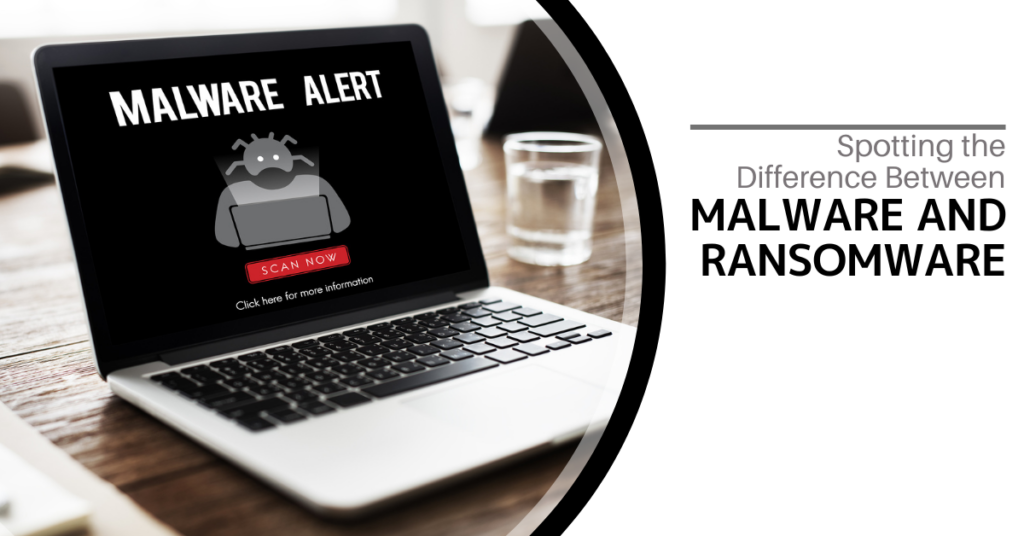|
Getting your Trinity Audio player ready...
|

Malicious software continues to pose a growing threat in our increasingly connected world. With more than 60 million new malware variants discovered online in 2024 alone, cybercriminals are showing no signs of slowing down. Among the many types of digital threats, malware and ransomware stand out as two of the most destructive. Knowing how to identify and defend against them is essential to protecting your data and devices.
What Is Malware?
Malware is a broad term used to describe software created to harm, exploit, or infiltrate a computer system. It includes a wide range of malicious programs that behave differently but all share one goal—disruption.
The main types of malware include:
- Viruses – Infect and replicate across devices.
- Worms – Spread independently through networks.
- Trojans – Disguise themselves as legitimate apps to trick users.
- Spyware – Secretly monitors your online behavior and steals data.
Once malware infects your system, it can:
- Corrupt or erase data
- Cause system crashes
- Steal personal and financial information
- Turn your computer into part of a botnet for further attacks
What Is Ransomware?
Ransomware is a specific kind of malware designed to extort money from victims. It encrypts files or locks users out of their systems, displaying a message that demands payment—often in cryptocurrency—for access to be restored. It’s essentially digital extortion.
Here’s how a ransomware attack typically unfolds:
- The system is infected via a malicious file or link.
- Files are encrypted using strong algorithms.
- A ransom message appears, often with a countdown.
- The victim is urged to pay a fee to regain access—though even paying doesn’t guarantee recovery.
By 2024, the average ransom payment soared to $2.73 million, with many businesses left scrambling to recover. Two main types exist:
- Locker ransomware – Prevents users from accessing their entire system.
- Crypto ransomware – Encrypts files while keeping the system itself usable.
Malware vs. Ransomware: What’s the Difference?
While both are harmful, their intentions and behaviors differ. Malware is designed for stealth—its goal might be to spy on you, steal your credentials, or quietly damage your system. In contrast, ransomware is loud and direct. It announces its presence with a demand for payment.
Think of malware as a silent thief, and ransomware as a kidnapper demanding ransom in broad daylight.
How Do These Threats Spread?
Both malware and ransomware can infiltrate your system through similar entry points:
- Infected email attachments
- Fake software updates or downloads
- Malicious websites
- USB drives loaded with harmful files
- Exploits in outdated software
Advanced tactics like fileless malware and AI-driven attacks are also becoming more common, with projections suggesting they’ll account for over 20% of threats by 2025.
How to Spot an Infection
Detecting malware or ransomware early can save you time, stress, and data loss. Here are some warning signs:
For malware:
- Sluggish system performance
- Frequent crashes or application errors
- Unfamiliar programs launching at startup
For ransomware:
- Sudden inability to access files
- A full-screen message demanding payment
- Altered desktop backgrounds with threatening warnings
Protecting Yourself Against Malware and Ransomware
You can greatly reduce your risk by following basic cybersecurity practices:
- Regularly update your operating system and software
- Use complex, unique passwords
- Avoid clicking unknown links or attachments
- Keep offline backups of critical files
- Use trusted antivirus and ransomware-specific protection tools
Offline backups are especially critical in ransomware cases, allowing you to restore your system without giving in to cybercriminals.
What to Do If You’re Infected
Acting quickly can minimize the damage. Follow these steps if you believe you’ve been targeted:
If malware is detected:
- Disconnect from the internet
- Run a full system scan with your antivirus software
- Remove infected files
- Change your passwords on all accounts
If hit with ransomware:
- Immediately disconnect from the network
- Avoid paying the ransom—it doesn’t guarantee recovery
- Report the incident to authorities or cybercrime agencies
- Restore from your most recent offline backup
Paying a ransom only fuels further criminal activity and doesn’t ensure you’ll get your files back.
Why Knowing the Difference Matters
Understanding how malware and ransomware differ empowers you to take appropriate action when faced with a threat. Early detection and knowing what kind of attack you’re dealing with can drastically reduce recovery time and data loss.
Being informed means you’ll respond faster, smarter, and with better tools at your disposal.
Final Thoughts: Stay Vigilant in the Digital Age
In a world full of digital risks, preparation is key. By staying educated on the threats of malware and ransomware—and keeping your security measures updated—you can reduce your vulnerability significantly.
If you’re unsure how to defend yourself or your business from the rising tide of ransomware attacks, seek expert assistance. With the right knowledge and tools, you can protect your digital life from even the most sophisticated threats.
Twintel has grown into an expansive, full team of IT services professionals, acting as the outsourced IT department of non-profits, small to mid-size businesses, and enterprise-level corporations in Orange County, across California, and nationally.
Today, it’s the strength and deep expertise of the Twintel team that drives positive outcomes for clients. Each of the support staff, technicians, and engineers works diligently each day to make sure that the companies served have the seamless, secure, and stable IT environments needed to allow them to pursue their organizational objectives.